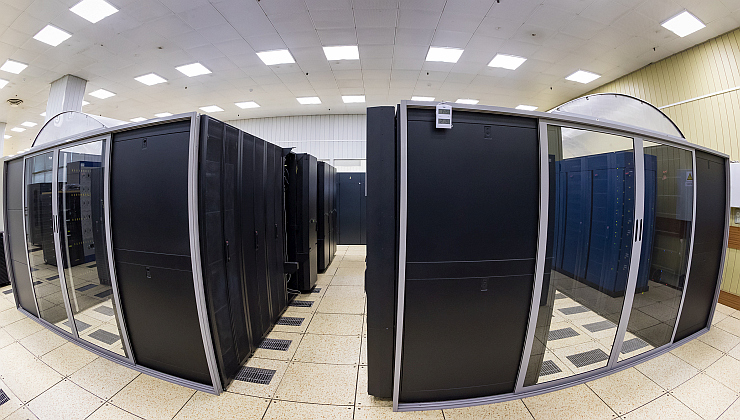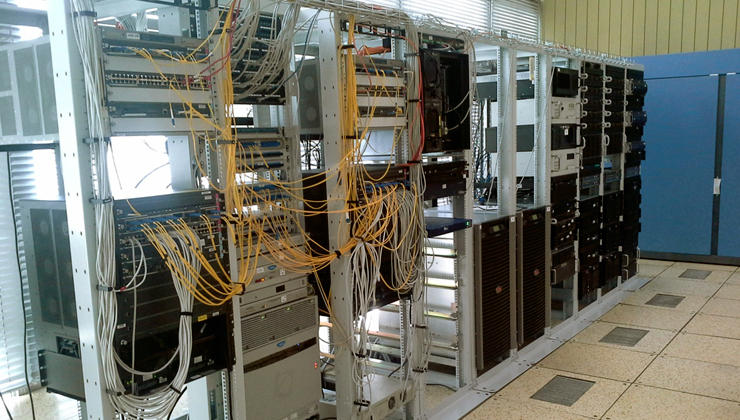The scientific programme of JINR is focused on achieving highly significant results of crucial scientific importance. The strategy of the Seven-Year Plan for the Development of JINR (2017-2023) envisages concentration of resources in order to upgrade the accelerator and reactor bases of the Institute and integration of its basic facilities into a unified system of European research infrastructure.
JINR Basic facilities
JINR has a remarkable collection of experimental physical facilities: the only superconducting accelerator of nuclei and heavy ions in Europe and Asia – Nuclotron; heavy ion Cyclotrons U-400 and U-400M with the record-breaking parameters of beams for experiments on heavy and exotic nuclei synthesis; unique neutron pulsed reactor IBR-2M for research in neutron nuclear physics and condensed matter physics; proton accelerator – Phasotron which is used for radiation therapy.
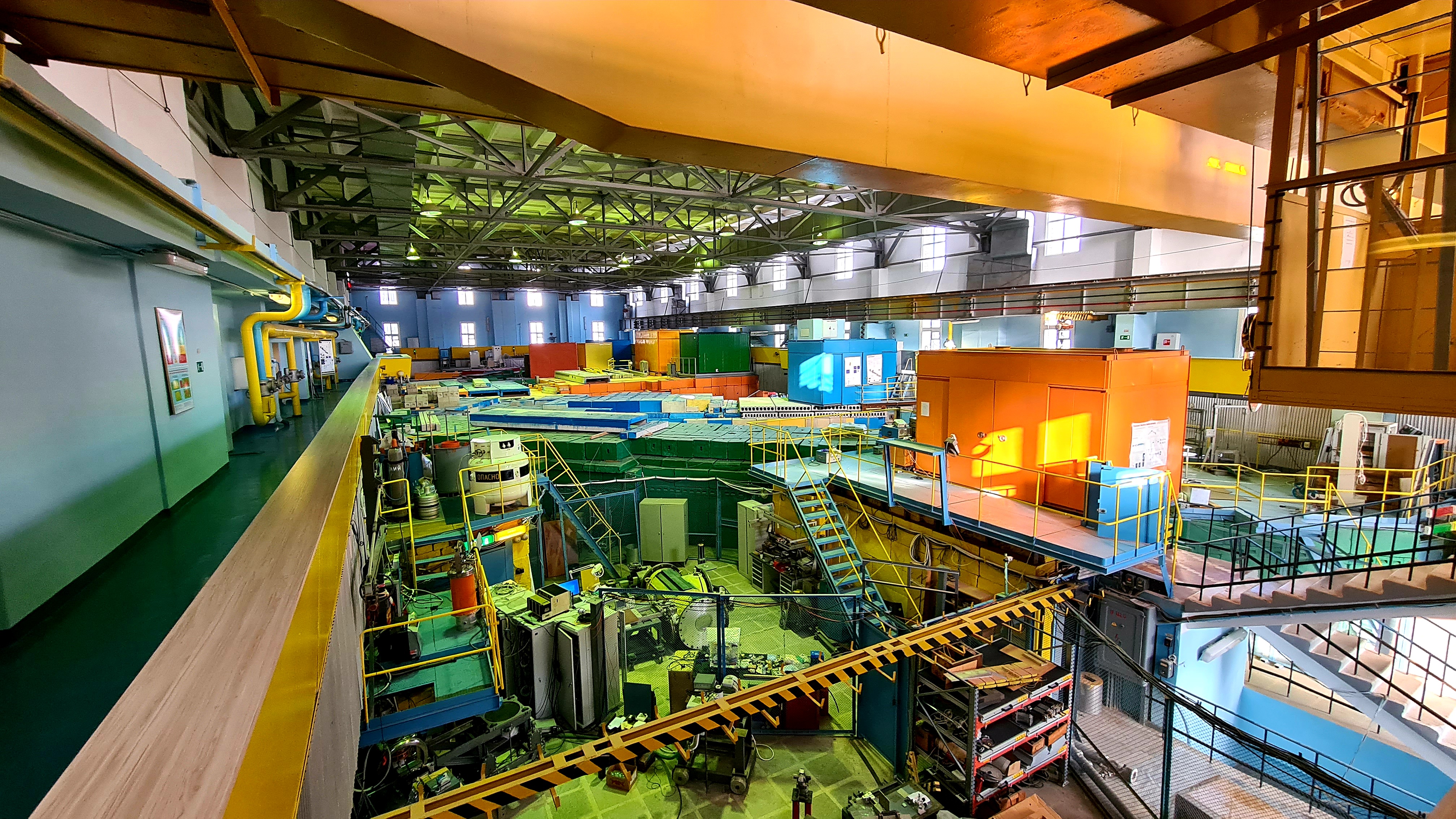
IBR-2
IBR-2 is a fast periodic pulsed reactor. It is the only periodic pulsed reactor on fast neutrons in the world. Its main distinctive feature is mechanical modulation of reactivity with a movable reflector. The reactor is located in the Laboratory of Neutron Physics and intended for studying the properties of condensed matter using neutron scattering.

Nuclotron
The Nuclotron accelerator is a strong-focusing synchrotron designed to provide beams of multicharged ions with energies of up to 6 GeV / nucleon, protons and polarised deuterons. The Nuclotron has been based on the unique technology of superconducting magnets proposed and developed in the Laboratory of High Energy Physics. Design and engineering development, testing and assembly of the Nuclotron elements have been performed by the efforts of the Laboratory staff-members.

U-400 and U-400M
The U-400 and U-400M cyclotrons have been built to study nuclear structure and mechanisms of nuclear reactions. The physical tasks that can be solved using these facilities include the synthesis of superheavy elements, study of the chemical properties of superheavy elements, study of the structure of light drip-line nuclei, study of the resonance structure of the nuclear systems beyond the drip-line, study of fusion and fission mechanisms.
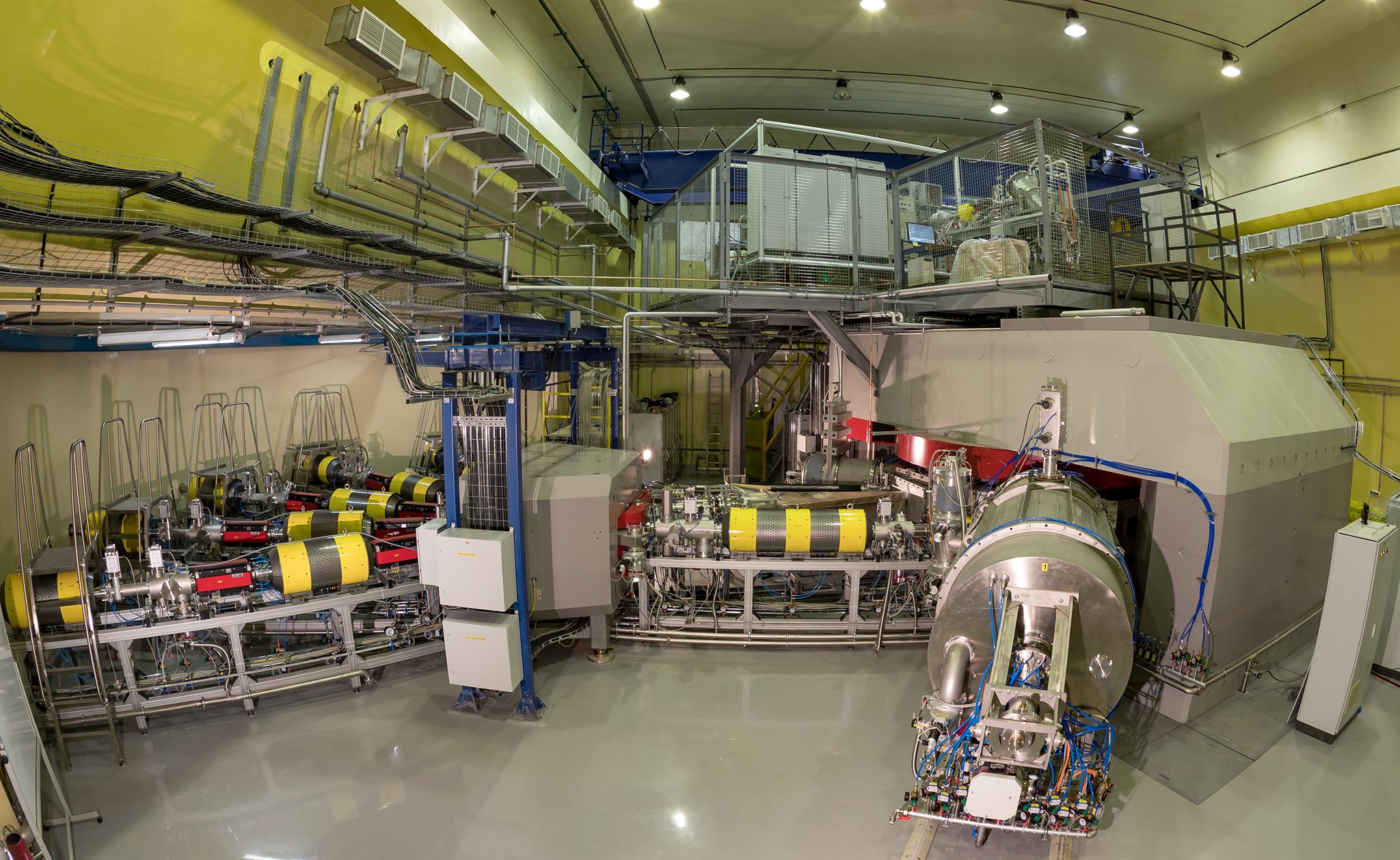
DC-280
DC-280 cyclotron is the basic facility of the the SuperHeavy Element Factory (SHE Factory) of the DRIBs complex. The DC-280 heavy ion accelerator is the world-leader among accelerators of this type. The designed intensity of accelerated heavy ion beams of calcium-48 produced at the DC-280 accelerator will reach 60 trillion ions per second that 10 times exceeds intensities achieved at the operating facilities all over the world in 2019.
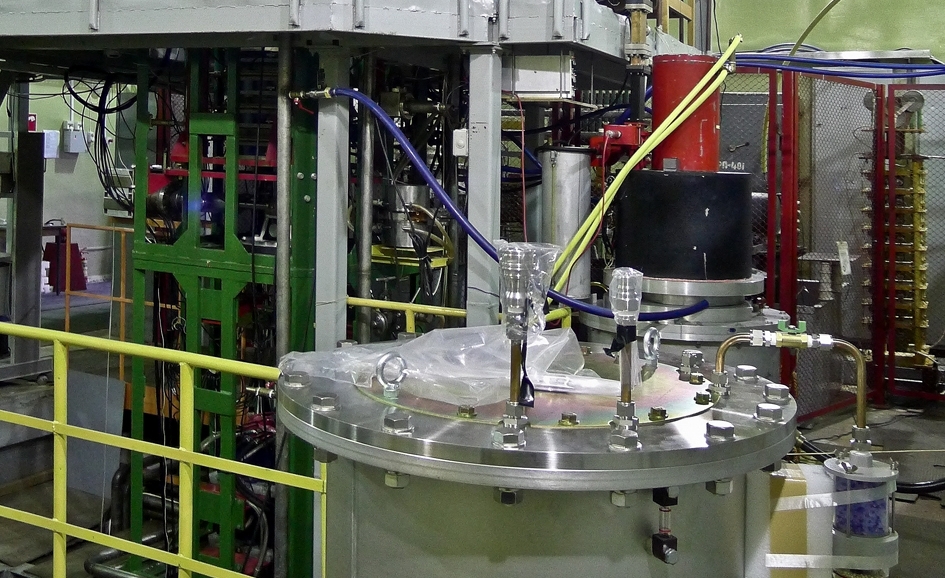
IREN
IREN (Intense REsonance Neutron source) is intended for experiments that require precision spectroscopy of neutrons in the energy range from 0.1 eV up to hundreds of keVs. The operation of the IREN facility is based on conversion of the electron beam LUE-200 on a tungsten target into the primary neutrons and their further multiplication in the subcritical core.
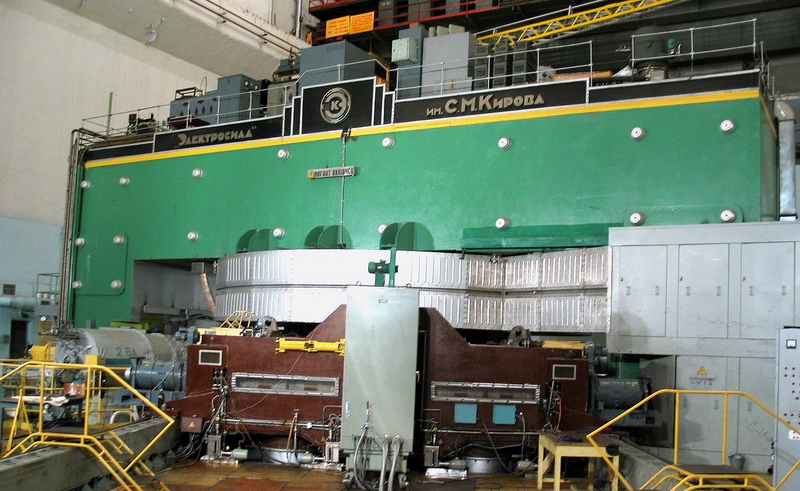
Phasotron
The Phasotron is a cyclic accelerator of heavy charged particles, where the particles travel in a constant and uniform magnetic field and are accelerated in a high-frequency electric field with decreasing frequency. Ten beam channels operating at the Phasotron are used for experiments with π-mesons, muons, neutrons, and protons. Secondary beams are intended for medical research, mainly, for medical treatment of oncological diseases.
The user programme at an upgraded complex of spectrometers of the research pulsed reactor IBR-2 included in the 20-year European strategic programme of neutron scattering research is being successfully implemented. The experts from 16 countries and JINR specialists conduct experiments in the most promising areas of research primarily related to extending the knowledge of the structure and properties of matter, creation of functional materials, development of nano- and biomedical technologies, as well as those related to acquiring knowledge of planetary geology and processes occurring in the earthquake sources.
JINR Facilities under construction
The Institute seeks to consolidate and strengthen its key position in the modern world. The strategy of JINR development for the following years is based on fundamental science, innovations and education, as well as on improvement of the scientific and social infrastructure. One of the highest priorities of the Institute is construction of its new basic facilities.
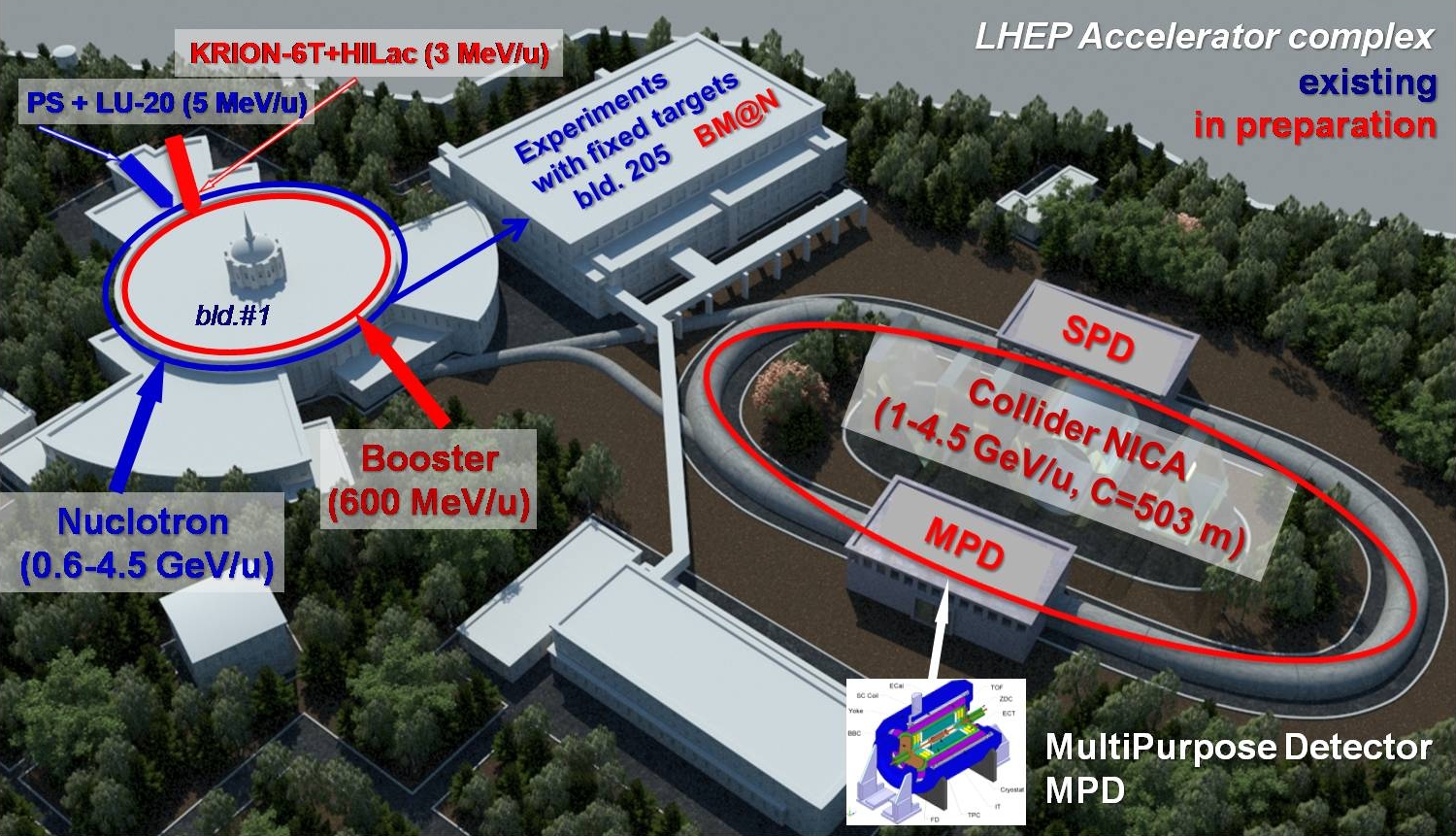
NICA
In contemporary theoretical understanding, matter can exist in several states: hadron matter, quark-gluon plasma and a transition process – “mixed phase”. High-density baryonic matter is virtually unexplored. For its experimental study, it is necessary to create baryonic matter in the extreme conditions of heavy ion collisions at high energies. With this purpose in 2008 a project NICA (Nuclotron-based Ion Collider fAcility) was launched.
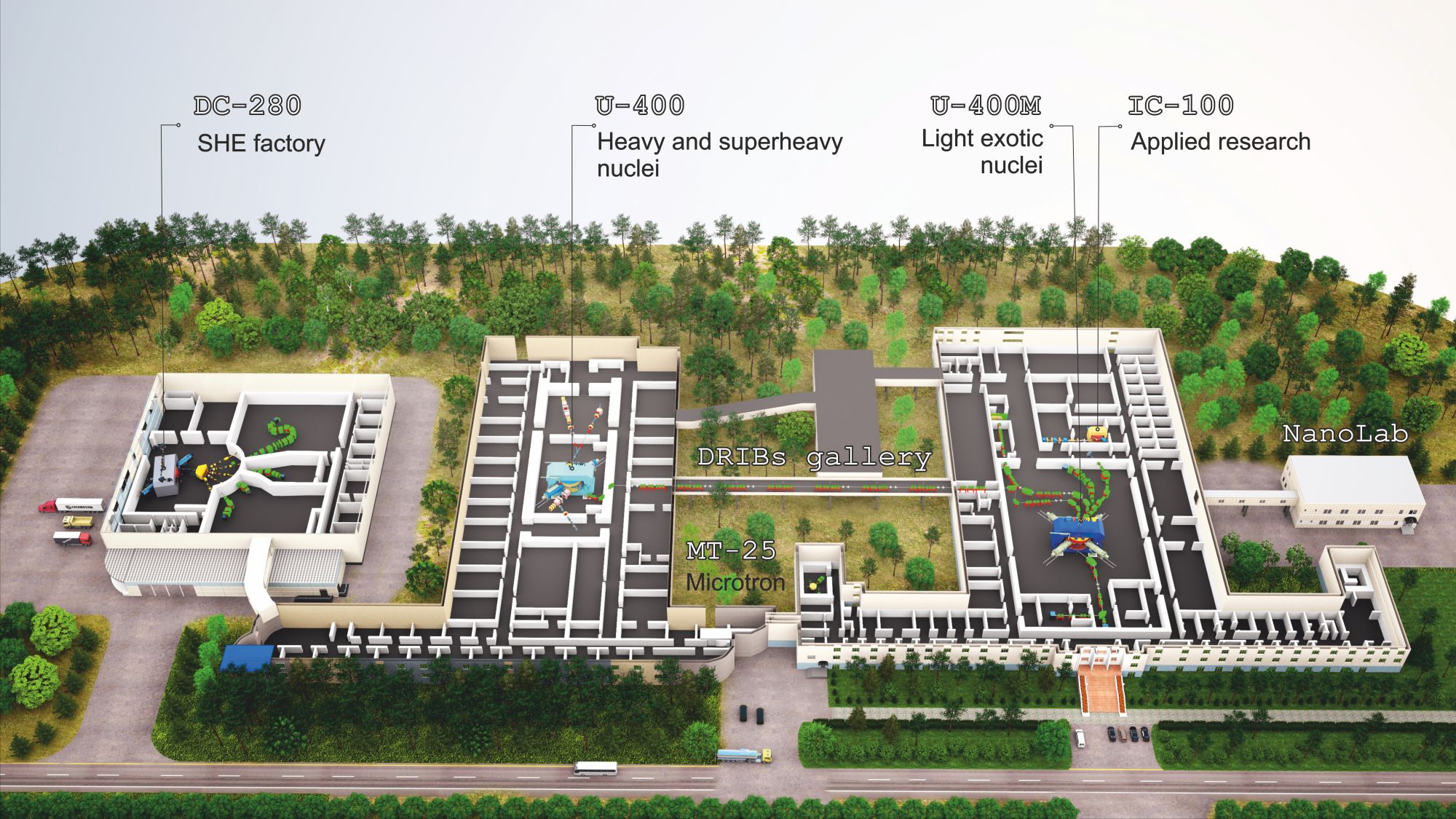
DRIBs
Heavy ion accelerators of Flerov Laboratory of Nuclear Reactions have been integrated in a complex DRIBs (Dubna Radioactive Ion Beams). The new DRIBs accelerator complex is aimed at studying nuclear reactions and the synthesis of new nuclei by unstable ion beams enriched with protons or neutrons.
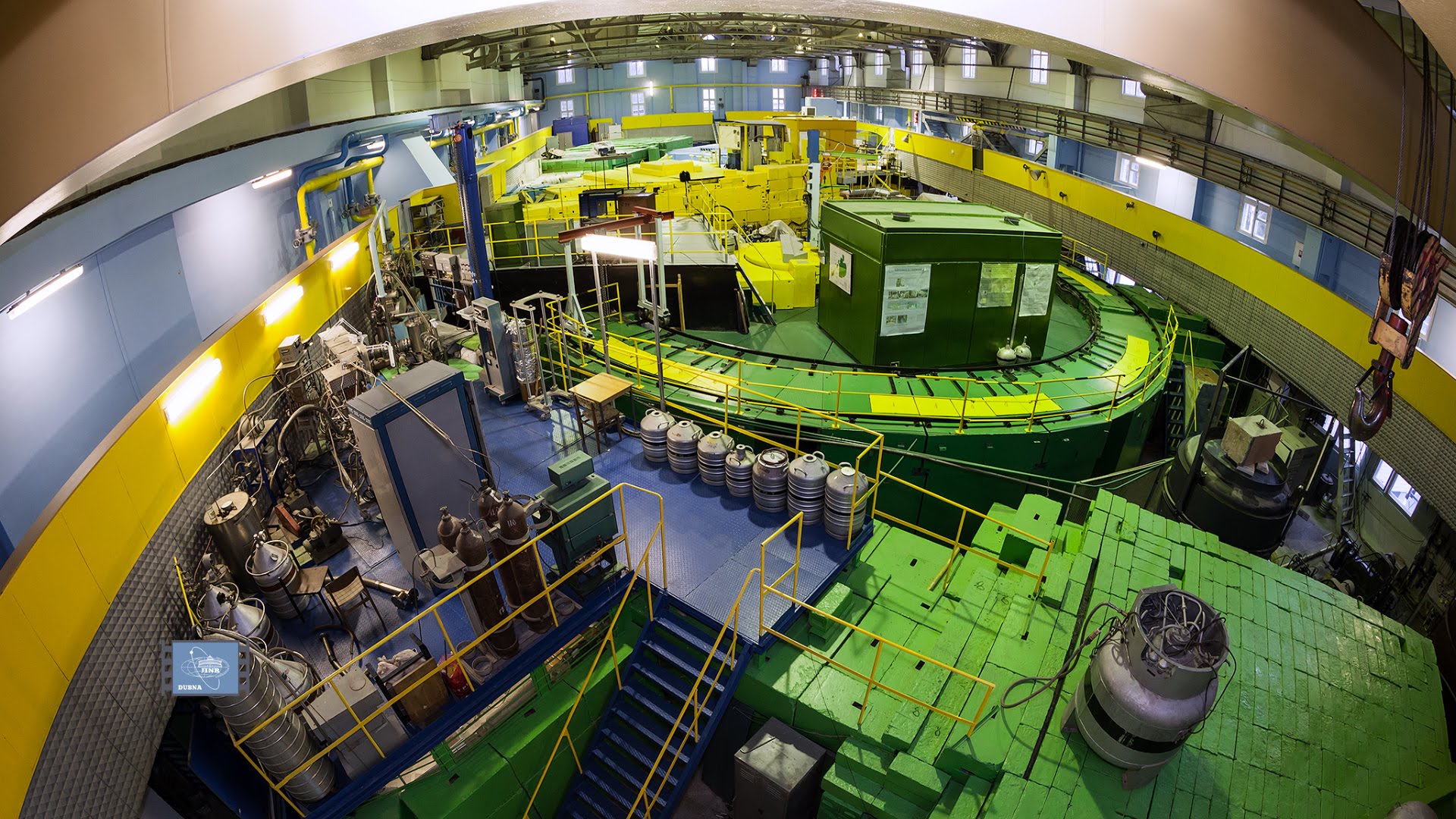
Установка 3
Текст про установку 3NICA is one of the six mega-science projects supported by the Government of the Russian Federation. NICA is the international project on the Russian territory. This complex under construction will be equipped with an MPD detector to conduct experimental studies of hadron matter and its phase transitions, an SPD detector to explore the spin effects, and a BM@N detector to study baryon matter. NICA was included in the the ESFRI Roadmap.
Intensive work is being done on the creation of a modern heavy ion accelerator complex DRIBs and construction of the key element of this project – the SuperHeavy Element Factory (SHE Factory) intended for experiments studying the mechanisms of reactions with stable and radioactive nuclei – a new basic facility of JINR that will provide new opportunities in the area, where JINR is the undisputable leader.
Video lessons about NICA for school students
Video course about NICA and collider technology


